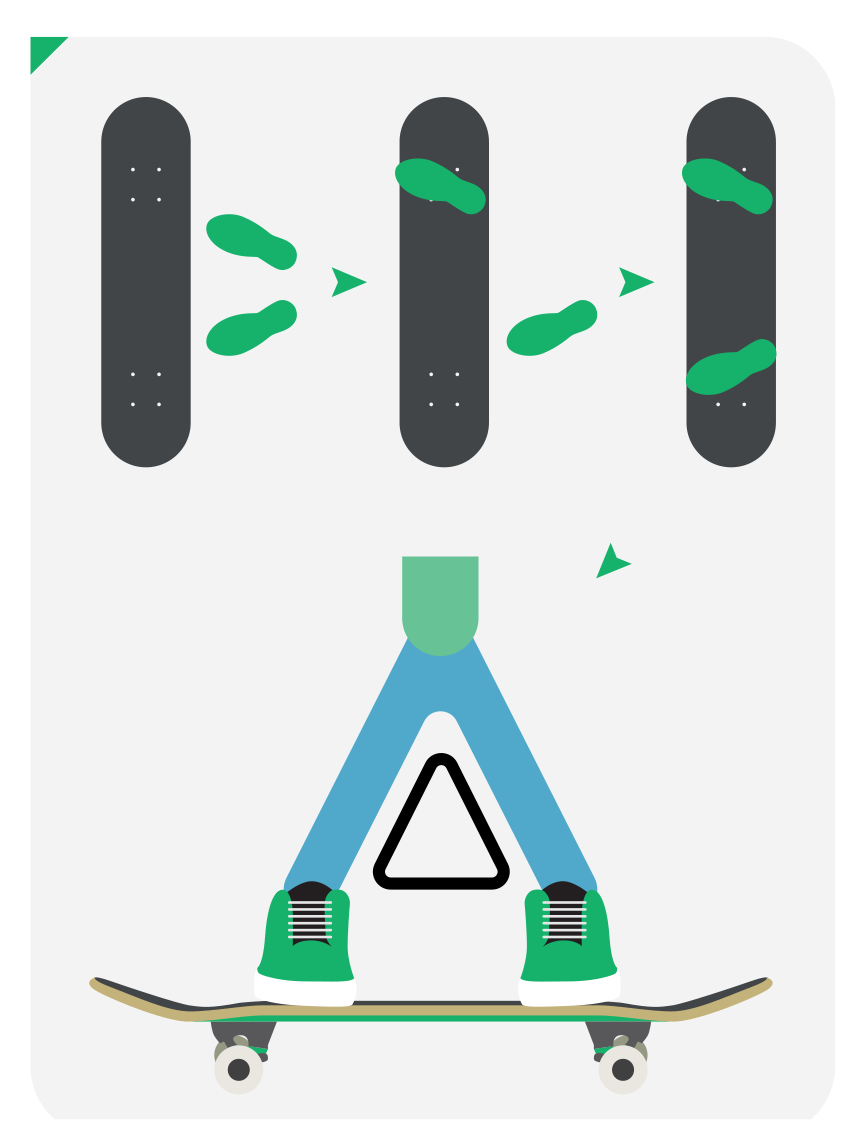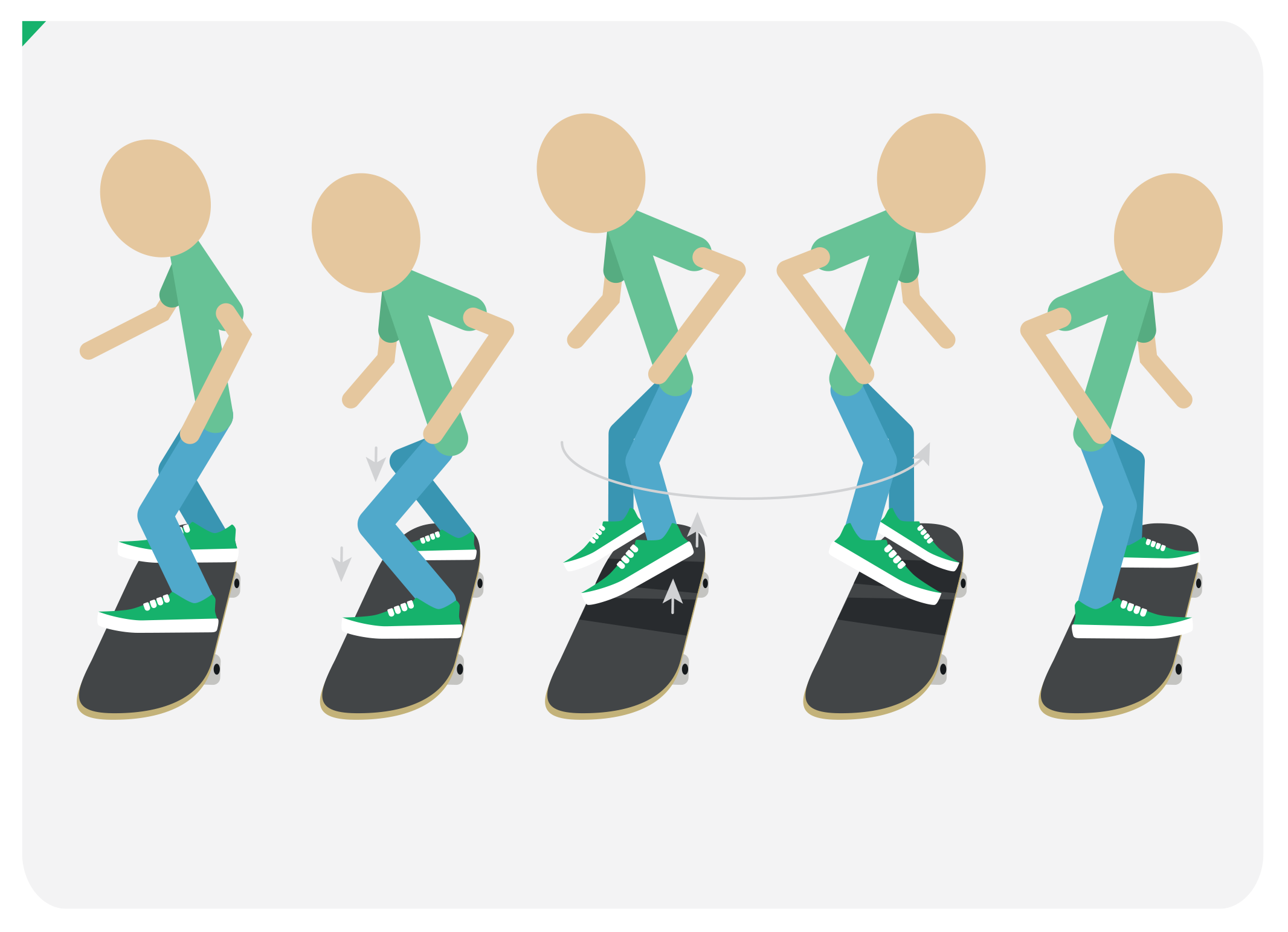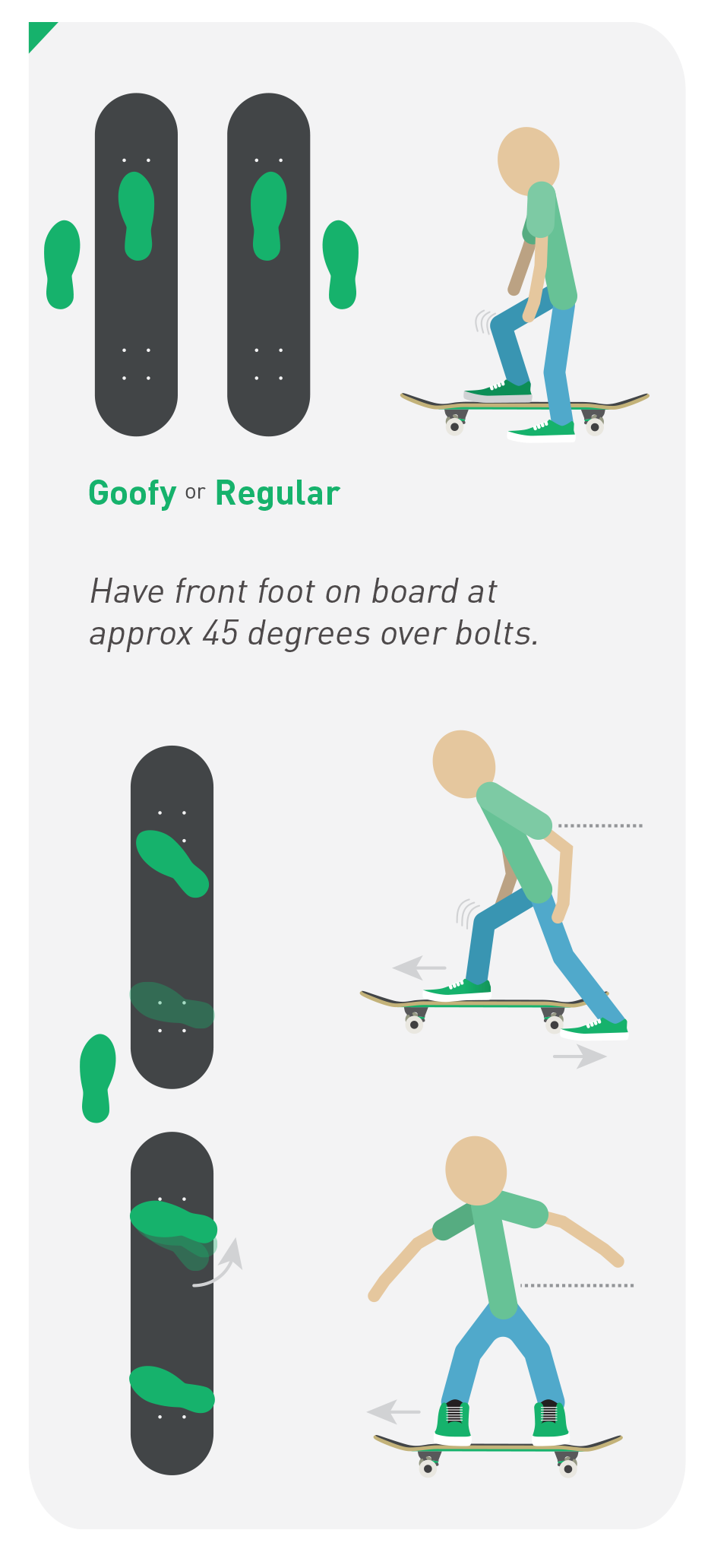Learn how to Skateboard
Learning how to skateboard is loads of fun, but requires practice, persistence and energy. Our top 10 tips on skateboarding will help beginners to take those first steps (or pushes) to getting the thrill of rolling. The skateboarding guide below will show you the right type of equipment to choose, the shoes to wear, all the way through to taking your skateboarding skills to skatepark. We also have a list of skateboard lesson providers to consider.
GETTING STARTED
Which Skateboard
Standard skateboards are between 7.5 to 9.5” wide and usually about 31” long (there are smaller versions for children) Other types of skateboard include cruiser/penny board, long-board, fish tail etc. We recommend buying a professional skateboard from a skateboard retailer, as toy skateboards and cheaper boards can be poor quality, that will give you bad first impression of skateboarding.
Where to skate
Start off standing on your board on the grass/carpet at first, to get used to the feeling of being stood sideways.
The next step is to find an area of smooth, flat ground (preferably with plenty of space)
Don’t go to skateparks until confident rolling (or for a lesson)
Safety equipment
Always wear a helmet when learning & pads can help too (especially wrist guards)
Helmet should fit snug on your head - If the helmet is too lose it wont protect you.
Shoes & Clothing (not fashion advice!)
Use skate shoes if you can get them or trainers with flat soles (running trainers will arch your foot and throw you off balance)
Choose comfortable, lose clothing and trousers that you don’t mind ripping (as you may fall when practicing).
Choosing your stance
Are you left foot (regular stance) or right foot forward (goofy stance)? A quick way to find out: stand straight up and have someone gently push your shoulders from behind, the foot which steps forward first, to steady you, will usually be your lead foot. But it is whichever you feel most comfortable with.
10 Tips for learning how to skateboard for Beginners
1. Stepping on the skateboard
With the board on the floor in front of you, place one foot over one of the sets of bolts, then place your second foot over the other set of bolts.
This forms a triangle with your legs which makes it a stable stance. Once comfortable standing on the deck, practice going from a standing position to a squatting position on the deck with knees bent. Repeat this until comfortable.
2. Jumping on and off a Skateboard
The next step is to try jumping onto the skateboard with both feet at the same time remembering to land with your feet covering the bolts. Keep your knees bent to absorb the impact and body weight central.
Now try combining the previous two exercises to make sure the individual is entirely comfortable on a skateboard: stepping on and off and jumping on and off.
3. Body Varial
Start off in normal riding position with your feet over the bolts. Jump up in the air, turn your body 180 degrees leading with your shoulders then land back on the board in the opposite direction with your feet over the bolts. It’s easier to start learning this one while moving slowly before building up the speed and the difficulty.
4. BALANCE
Getting comfortable with your balance on a board is the best skill you can learn, with enough practice of this everything will feel more natural. Remember the phrase “Bolts for Balance” - Meaning that your feet should always be over the top the bolts to have the right stance for balancing.
5. Pushing on a skateboard
Place one foot on the deck just overlapping the first two bolts at the front of your skateboard and place the other foot on the floor just next to the board, about halfway along its length. Bend the knee of the leg that’s on the board.
It’s important that this stance is comfortable, so it needs to be double checked. It doesn’t matter which leg is on the deck and which is on the floor, but make sure it’s understood that whichever leg is on the floor is the leg with which you will push (most people will place their left foot forward and push with their right).
To move forward, push off the ground while rocking the skateboard forward. When moving turn sideways and place the foot with which you were pushing, across the tail of the skateboard, just over the bolts. Once underway, pivot the front foot using the ball of your foot. This aligns your body and your feet together.
6. Turning
Once you are moving with both feet on the board, apply a little pressure to your toes towards the ground (while maintaining an upright position) and you will notice the board starts to turn (in a frontside direction).
Repeat a similar movement, but on your heals to make the board turn the opposite direction (backside turn).
7. Stopping
To stop once in motion simply take the foot with which you’ve been Pushing off the skateboard and gradually apply pressure to the ground until you come to a stop.
8. Tic Tac turning
This is the method of steering the skateboard whilst in motion. It is done by applying pressure to the tail whilst leaning back. This raises the front wheels off the ground allowing you to place them back down wherever you want by leaning forwards again and taking pressure off the tail.
Whilst riding along, put your back foot on the tail of the board, and put your front foot covering the nearest two bolts so your truck is free to manoeuvre. Now apply pressure to the tail of the skateboard whilst leaning back slightly. This raises the front wheels off the ground allowing you to manoeuvre the board and place them back down wherever you want by leaning forwards again and taking the pressure off the tail.
Remember to keep your front foot on the deck and use it to steer the deck from side to side as you raise your front wheels. Often one side is easier than the other, so once confident in one direction reverse the motion. When confident mix this in with pushing to practice moving around.
9. Manual
Start in normal riding position with your back foot on the tail and front foot over the front bolts.
Build up your speed via Pushing. When comfortable on the board lean back and push down on the tail. This will cause the front wheels to rise off the ground.
Practise balancing so that your tail does not scrape along the ground. A good tip is to make sure you bend your front knee and not apply too much pressure to the nose of the deck.
Lean forwards again to place the front wheels back on the ground.
10. Hippy Jump
Before learning to ollie and do other tricks, try moving along and jump off your board with both feet and land back in the same position. Then try the same trick by jumping over a horizontal pole, allowing the board to roll underneath the pole and you jump over the top and land back on the board.
NEXT STEPS
Once you have learned to ride a skateboard and feel comfortable rolling around it is time to learn some tricks and maybe try out a skatepark. Download the MySkate App and it will show you the locations of all the UK skateparks and has a SKATE game which allows you to learn new tricks, with tuition videos for each trick





